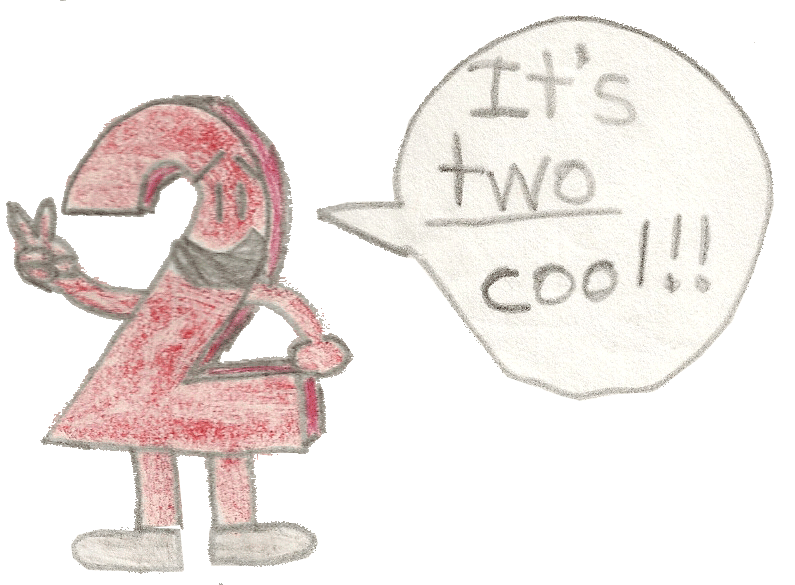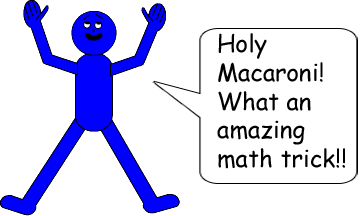Delicious Differences
Here's a function to consider for this math trick:
Y = X + √(X)
Let X be equal to an integer that's a perfect square. If you list consecutive perfect squares in a table like this, then...
| X | Y | Differences Between Y Values |
| 0 | 0 | 2 |
| 1 | 2 | 4 |
| 4 | 6 | 6 |
| 9 | 12 | 8 |
| 16 | 20 | 10 |
| 25 | 30 | 12 |
| 36 | 42 | 14 |
| 49 | 56 | 16 |
| 64 | 72 | 18 |
| 81 | 90 | 20 |
| 100 | 110 | 22 |
| 121 | 132 | 24 |
| 144 | 156 |
The differences of the Y values are consecutive even numbers!

The next difference in the rightmost column would be 26 if I plugged the next perfect square into X!
In this next table, their additive inverses are plugged into X. Now watch what happens in the rightmost column:
| X | Y | Differences Between Y Values |
| 0 | 0 | -1 + i |
| -1 | -1 + i | -3 + i |
| -4 | -4 + 2i | -5 + i |
| -9 | -9 + 3i | -7 + i |
| -16 | -16 + 4i | -9 + i |
| -25 | -25 + 5i | -11 + i |
| -36 | -36 + 6i | -13 + i |
| -49 | -49 + 7i | -15 + i |
| -64 | -64 + 8i | -17 + i |
| -81 | -81 + 9i | -19 + i |
| -100 | -100 + 10i | -21 + i |
| -121 | -121 + 11i | -23 + i |
| -144 | -144 + 12i |
The Y values & their differences are complex numbers! Each Y value is the additive inverse of a perfect square plus its square root multiplied by the imaginary unit i! The differences are consecutive negative odd numbers & each one is added to the imaginary unit i! (And of course, 0 + 0i = 0.)


Back to Index Page Back to Math Trick Menu
© Derek Cumberbatch



